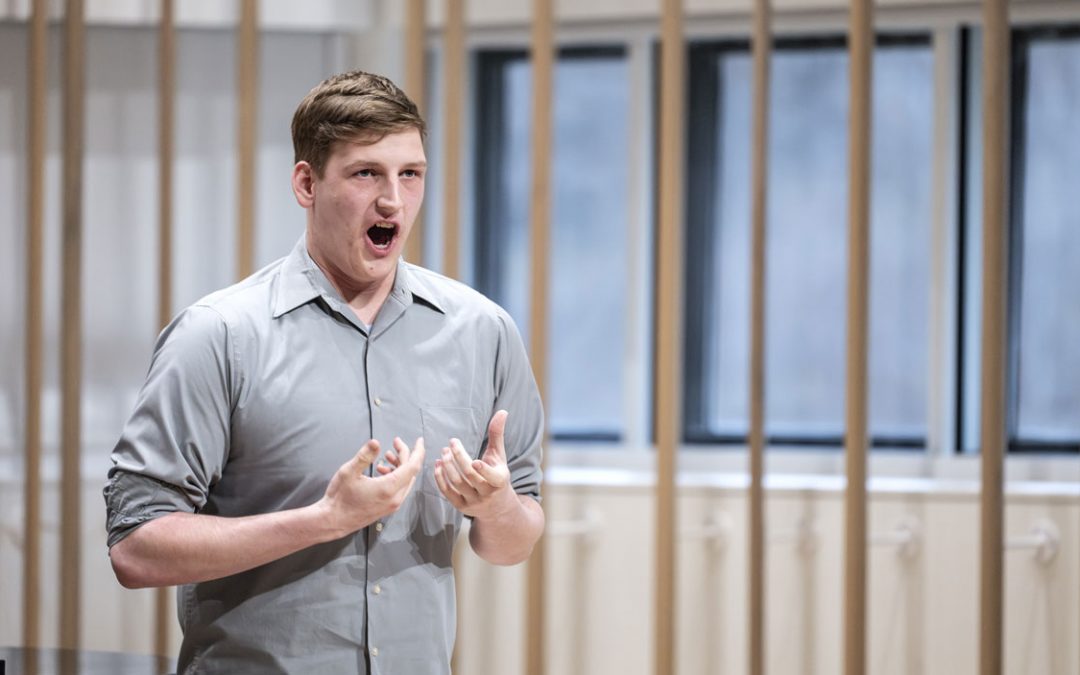
Hundreds of people attended UMSL's community engagement celebration Monday including: (left to right) Wayne Goode, curator of the University of Missouri System; Betty Van Uum, assistant to the provost for public affairs and economic development; Patrick Green, mayor of Normandy; and Paul Hubbman, East-West Gateway Council of Governments.
Enticed by the promise of cake, hundreds of people learned a lot about community engagement at the University of Missouri–St. Louis on Monday. Celebrating the university’s national designation as a campus committed to the greater community, organizers hosted 16 campus parties with 20 cakes and talked about how and why UMSL cares.
The university recently earned a community engagement classification from the Carnegie Foundation for its institutional commitment and engagement to the greater community. UMSL was one of 115 universities nationally, four in the state to receive the designation.
“We care about the people in our backyard. It’s why we are engaged,” said Kelcy Siddall a UMSL graduate student in public policy and one of four participants in a panel discussion that asked the question: “Community Engagement: Why Should We Care?”
Siddall, who grew up in UMSL’s backyard, uses what he calls “first-hand knowledge of how hard it is to get by” as a leader in the Students of Service program. The three-year project involves 1,400 UMSL students who will log more than 23,000 hours of service working side by side with community leaders, teachers and residents in the Normandy School District in north St. Louis County..
Patricia Parker, the E. Desmond Lee Endowed Professor in Zoological Studies, spoke of her community, which reaches into Ecuador’s Galapagos Islands. An internationally recognized behavioral ecologist, Parker works with her colleagues at the St. Louis Zoo’s WildCare Institute, and scientific organizations in the Galapagos on the conservation of threatened species. She spoke of setting common goals in today’s complex world and how organizations are learning to give as well as gain when they work together.
“Ten years ago the National Science Foundation told faculty that they couldn’t be the ‘best’ if their research doesn’t have an impact on anyone else,” said Parker.
Speaking from a community perspective was Chris Krehmeyer, director of Beyond Housing, a social service organization providing low-income families with affordable housing assistance. In addition to collaborations with many of the university’s colleges and programs, professors provide his organization with research and data on the 24 neighborhoods in the Normandy School District that make up his service area.
Katie Trouton earned a BSBA from UMSL last May and now works as a service specialist at Edward Joes, said she learned about “making a difference in my community” at UMSL. Today she volunteers her time with the United Way and has assisted the Edward Jones Arts and Education partnership.
No conversation on community engagement goes very far at UMSL without talking about the late E. Desmond Lee. A beloved philanthropist, Lee’s “collaborative vision” at UMSL brings 30 endowed professors together with more than 100 partners and community organizations to improve education and create opportunities for underserved communities.
“Des Lee had it right,” said Parker. “He was the embodiment of community engagement. He often said that you more than double what you can accomplish if you do it with one other person. Those benefits multiply exponentially when we add more.”
All across campus, a similar message was being spread.
• The College of Education set up impressive displays on two of its community-focused programs. The Center for Character and Citizenship’s training program for teachers and school administrators helps foster the development of character in their students while still supporting high quality academic instruction. Collaborating with five other universities and youth service organizations, UMSL’s Regional Institute of Tutorial Education offers training programs for teachers, tutors, community leaders and others to address the achievement gap in underserved communities.
• UMSL Libraries dispensed with its policy of “no food or drink” with cake and a Power Point presentation on the ways in which it provides “Service Outside the Lines.” Teaching high school students how to use the library, offering workshops on saving historic treasures or opening up it’s vast collections to scholars around the world, UMSL’s librarians are engaged. Noted one of the slides, two UMSL librarians traveled to New Orleans as part of a national librarian program to help residents rebuild after Hurricane Katrina.
• Among its many community programs, the College of Nursing highlighted its work with the Department of Justice Community-Oriented Policing Program on a drug use prevention education program in Jefferson County. Students in community health nursing are implementing a program for elementary school students designed to decrease the risk of methamphetamine use or exposure.
• All over campus, community and business leaders, elected officials and other partners were on hand to share the cake and congratulate the university on its investment in the region.
Monday’s celebration was part of a weeklong recognition of community engagement organized through the Provost’s Civic Engagement Steering Committee. Participants rated Monday’s celebration a success.
“I think the day demonstrated how ubiquitous community engagement is on our campus,” said Provost Glen Cope. “It confirmed what we know. Community engagement is woven into our mission, our research, our curriculum. Our ongoing commitment to society is the reason many of our students and faculty choose this university.”














